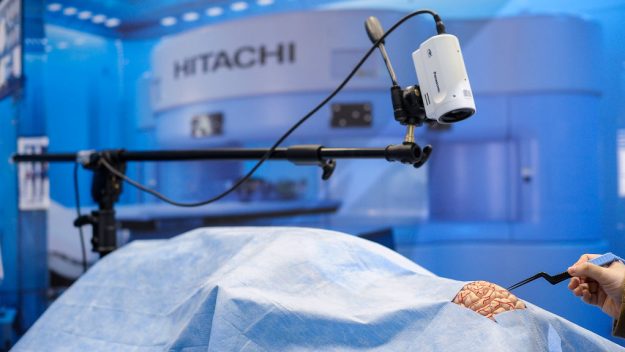A surgeon in China has performed the world’s first remote brain surgery using 5G technology while the patient was more than 1,800 miles away, according to local media.
The patient, who has Parkinson’s disease, received a deep brain stimulation (DBS) implant in Beijing on Saturday during a procedure that lasted three hours, China’s state-run CGTN reported.
The surgeon, Dr. Ling Zhipei, manipulated the instruments in Beijing from Sanya City, in Hainan, located about 1,864 miles (3,000 kilometers) away, with a computer using a 5G network powered by China Mobile and Huawei.
China’s first #5G-based remote surgery on human brain was successfully conducted on Saturday. Some 3,000 km apart, doctors in Hainan manipulated the instrument to start the 3-hour surgery on a patient with Parkinson’s in Beijing, marking a breakthrough in China’s telemedicine. pic.twitter.com/VR9XUa64iU
— People’s Daily, China (@PDChina) March 17, 2019
“I take turns working in Beijing and Hainan, and the operation took place during my Hainan rotation. A patient with Parkinson’s in Beijing needed surgery and couldn’t fly to Hainan,” Ling told CGTN. “The 5G network has solved problems like video lag and remote control delay experienced under the 4G network, ensuring a nearly real-time operation. And you barely feel that the patient is 3,000 kilometers away.”
The patient is reportedly “feeling good.”
The landmark surgery is a big step toward surgeons from premier hospitals conducting more remote surgeries on patients located in far-flung areas or in disaster situations, and completing operations which were previously difficult to finish at the grassroots-level hospitals, said Ling.
In January, China also performed the first 5G remote surgery. It was, however, on a laboratory animal, and involved removing the animal’s liver, which was completed successfully.
The big advantage of using a 5G network for remote surgery is the reduced latency it offers, according to PCMag. The lower the latency, the more responsive the surgery robot will be to the surgeon’s actions tens or hundreds of miles away.
It then reduces the chances of mistakes being made and allows the surgeon to work as if they are actually present in the same room — or as Ling described “barely feel that the patient is 3,000 kilometers away.”

